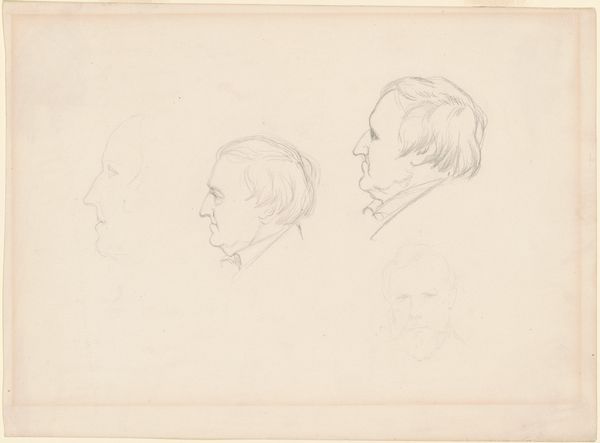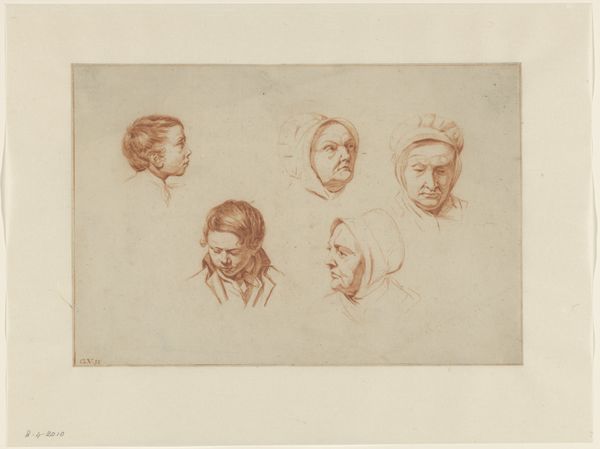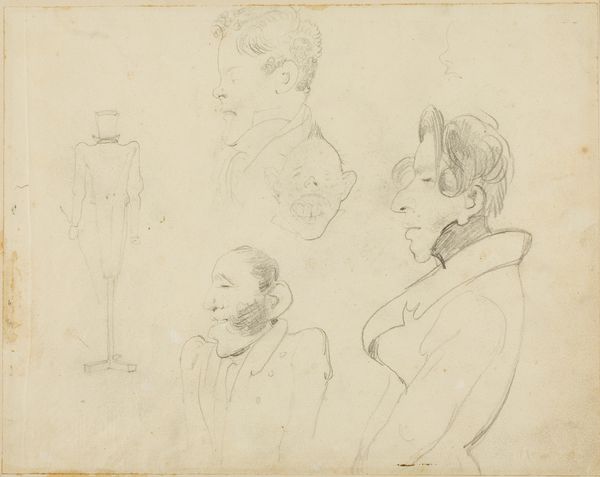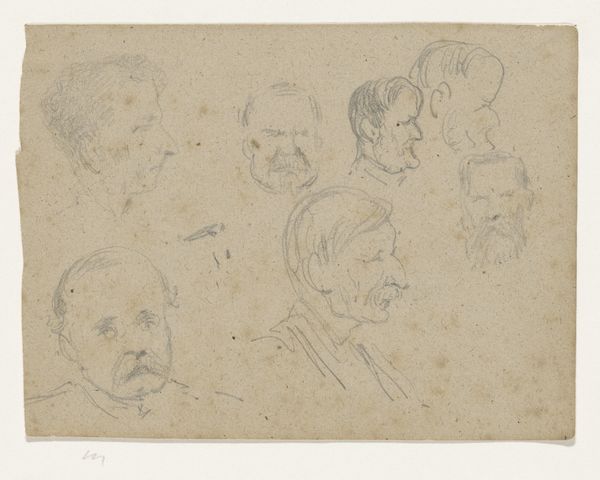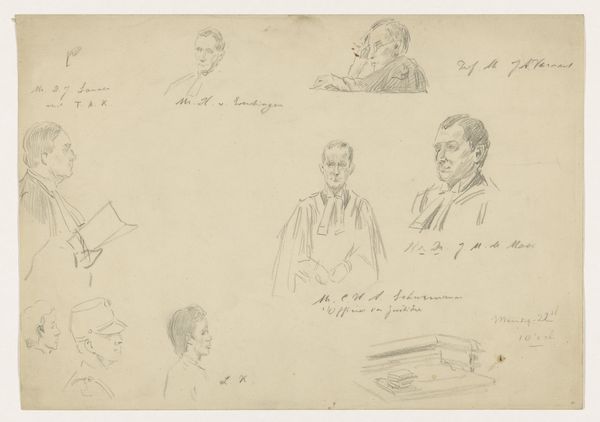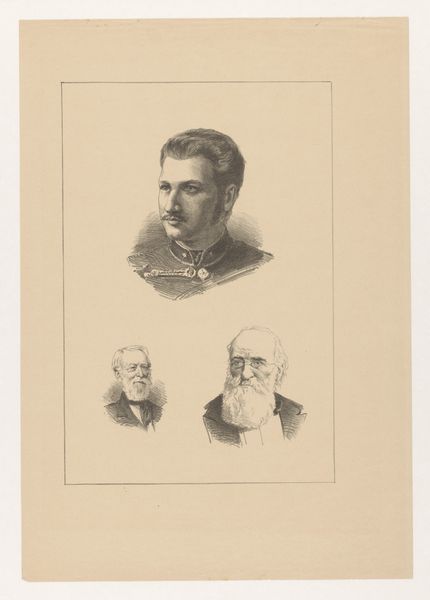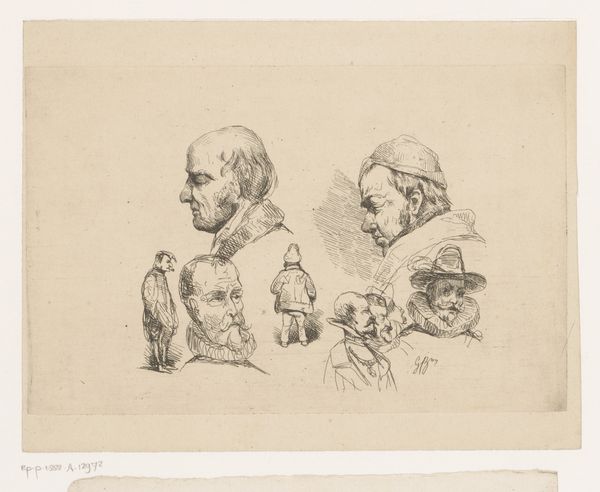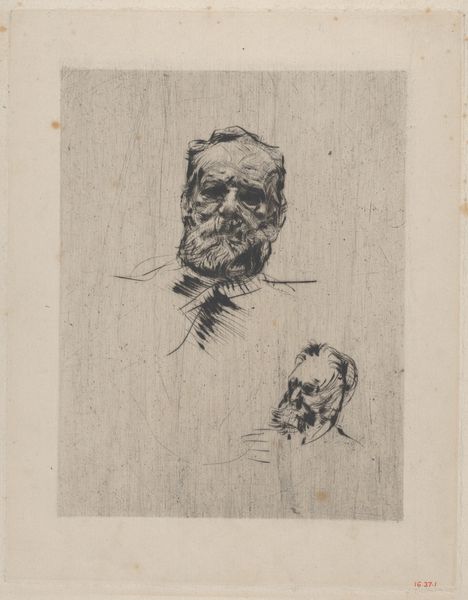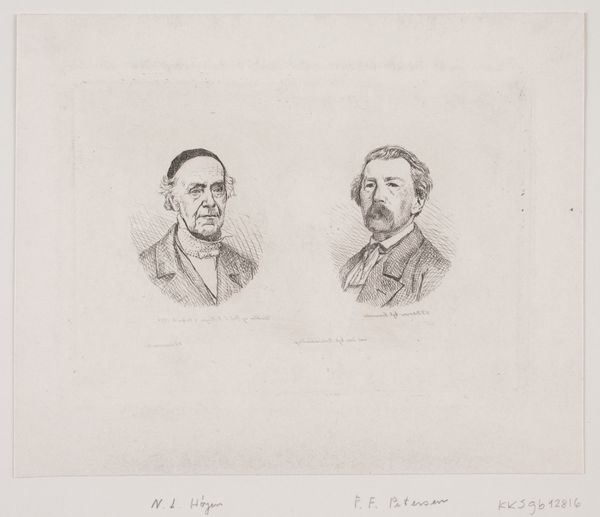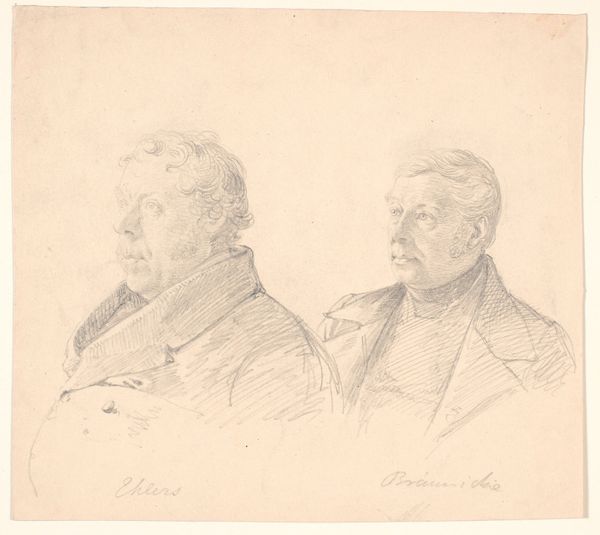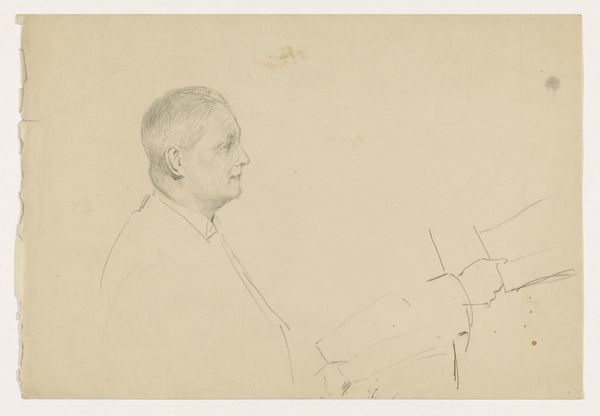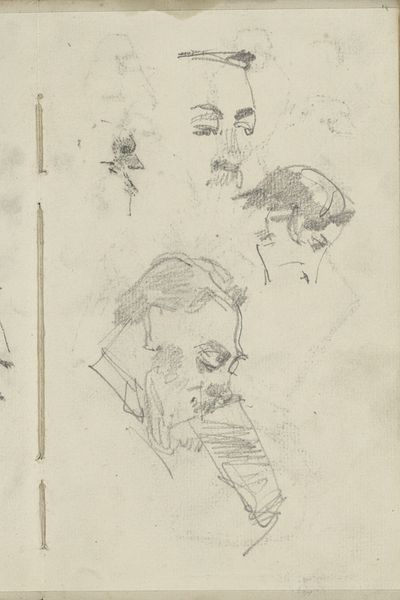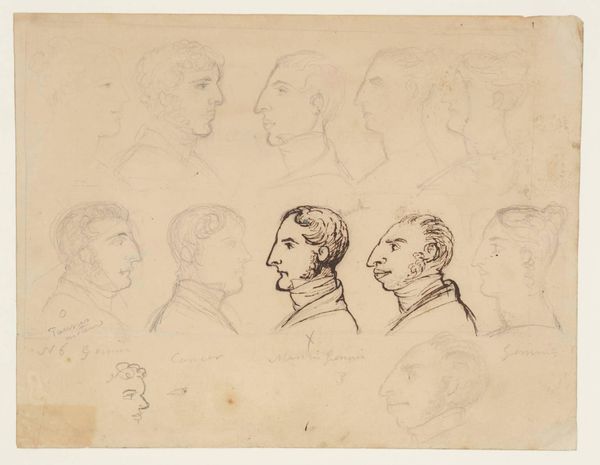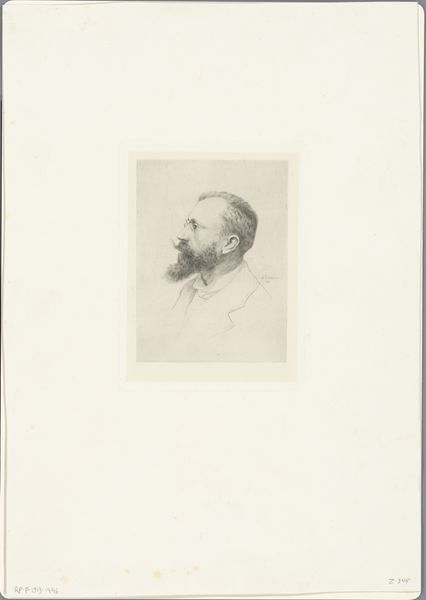
drawing, pencil
#
portrait
#
pencil drawn
#
drawing
#
toned paper
#
light pencil work
#
self-portrait
#
pencil sketch
#
personal sketchbook
#
pencil
#
sketchbook drawing
#
pencil work
Dimensions: height 210 mm, width 233 mm
Copyright: Rijks Museum: Open Domain
Curator: Upon viewing, I immediately notice a sketchbook page filled with quick portraits; they seem almost fleeting in their execution. Editor: Yes, this sheet titled "Portretschetsen," created by Johan Michaël Schmidt Crans between 1875 and 1895, presents exactly that: multiple pencil sketches of faces, rapidly captured on toned paper. It offers such a unique window into the artist's process. Curator: Agreed, and speaking of the process, notice the artist’s efficient use of the pencil, creating shadow and volume with remarkably economic lines. The visible toolmarks speak to its function as a working study rather than a formal artwork for public display. Editor: And what did portraiture mean for the 19th-century artist? Beyond simply documenting likeness, portraits affirmed social status and power. These sketches might have been practice for more formal commissions, or studies to deepen understanding of social structures, literally etching them into the artist’s understanding. Curator: Right. The material choices themselves–the pencil and toned paper – signal a pragmatic approach. Unlike oil paint on canvas, easily displayed and valorized, a pencil drawing suggests a disposable and functional object; it's raw, honest in a way a more refined portrait couldn't be. Editor: Do you think then, the informality offers us something beyond the subject? That this lack of finishing becomes a value in itself by opening up ideas around access and artistic practice? Where would sketches such as these exist within a modern gallery? Curator: That's an interesting point! It also asks questions of labor. Was this for himself? Was this work for someone else that would become elevated? The intimacy of these sketchbook drawings does offer us a rare view of the creative process, breaking down that aura of high art. Editor: Well, regardless of their original intent, these rapidly captured likenesses speak volumes, and now are part of that world in terms of exhibition, so where do they belong? Food for thought!
Comments
No comments
Be the first to comment and join the conversation on the ultimate creative platform.
